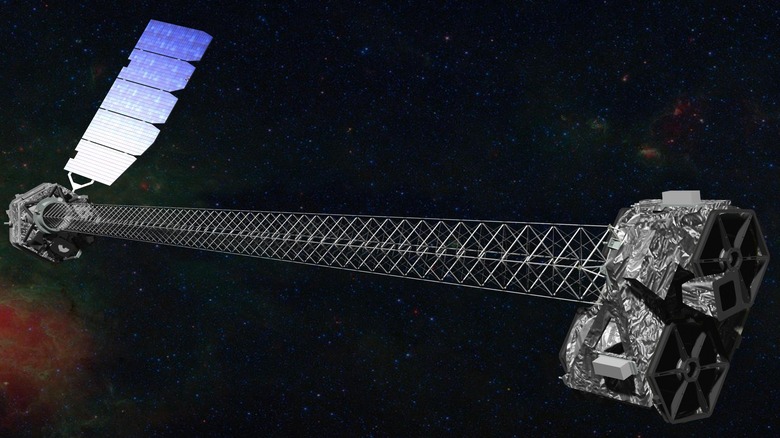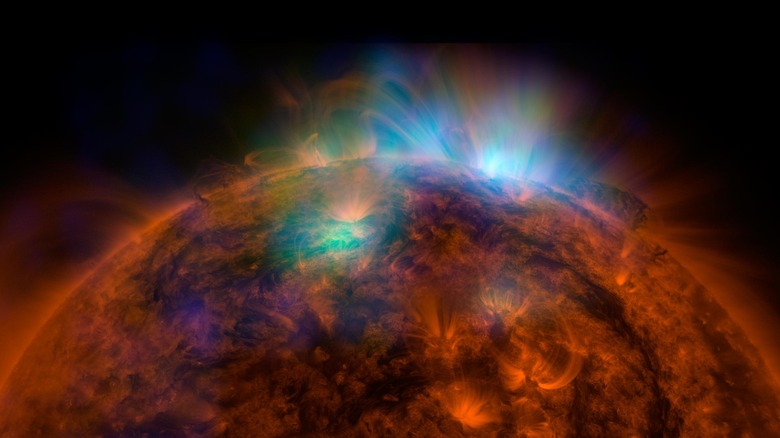How NASA's NuSTAR Telescope Peers Out Into The X-Ray Universe
Some of the most famous telescopes are those which look in the visible light range to take pictures of space as the human eye would see it, like the Hubble Space Telescope, or the ones that look in the infrared wavelength to peer through clouds of dust, like the Spitzer Space Telescope or the James Webb Space Telescope. But there are other telescopes looking in different wavelengths that you might not have heard of, like NASA's NuSTAR telescope that makes observations in the X-ray wavelength.
NuSTAR, or the Nuclear Spectroscopic Telescope Array, was launched in 2012 and is used to study black holes, which are stars that have exploded in supernovas, and highly active galaxies (via Caltech). The array looks at the light at the higher end of the X-ray wavelength and as such, it mostly looks at targets outside of our solar system. However, it can also observe some high-energy X-rays coming from the sun, and occasionally it has spotted unusually high-energy X-rays from the planet Jupiter.
With its study of Jupiter, NuSTAR was able to see high-energy X-rays that were produced by its strong magnetic field, even though it's rare to see these coming from planets. "It's quite challenging for planets to generate X-rays in the range that NuSTAR detects," explained researcher Kaya Mori of Columbia University. "But Jupiter has an enormous magnetic field, and it's spinning very quickly. Those two characteristics mean that the planet's magnetosphere acts like a giant particle accelerator, and that's what makes these higher-energy emissions possible."
Studying black holes and beyond
Some of NuSTAR's biggest discoveries though have been regarding black holes. Black holes don't give off light themselves, but as the material around black holes swirls, it heats up and produces X-rays. This allows researchers to see through clouds of dust and gas to spot black holes lurking within, which has helped to more accurately estimate how many black holes exist in the universe (via JPL).
NuSTAR also managed to measure how much a supermassive black hole warps the space around it due to its enormous gravity in the first measurement of its type in 2013. "We can trace matter as it swirls into a black hole using X-rays emitted from regions very close to the black hole," explained NuSTAR principal investigator Fiona Harrison at the time. "The radiation we see is warped and distorted by the motions of particles and the black hole's incredibly strong gravity."
And NuSTAR is useful for investigating other extremely dense objects as well, such as neutron stars, which are the leftover cores of massive stars which have run out of fuel and collapsed. These cores are very dense and have very strong magnetic fields, and NuSTAR studied objects like one in the galaxy M82 that generates huge amounts of X-rays and is brighter than scientists thought such objects could be. The telescope is still operating in orbit around the Earth and is continuing to make discoveries about the X-ray universe. It celebrated its 10th birthday in June 2022.

